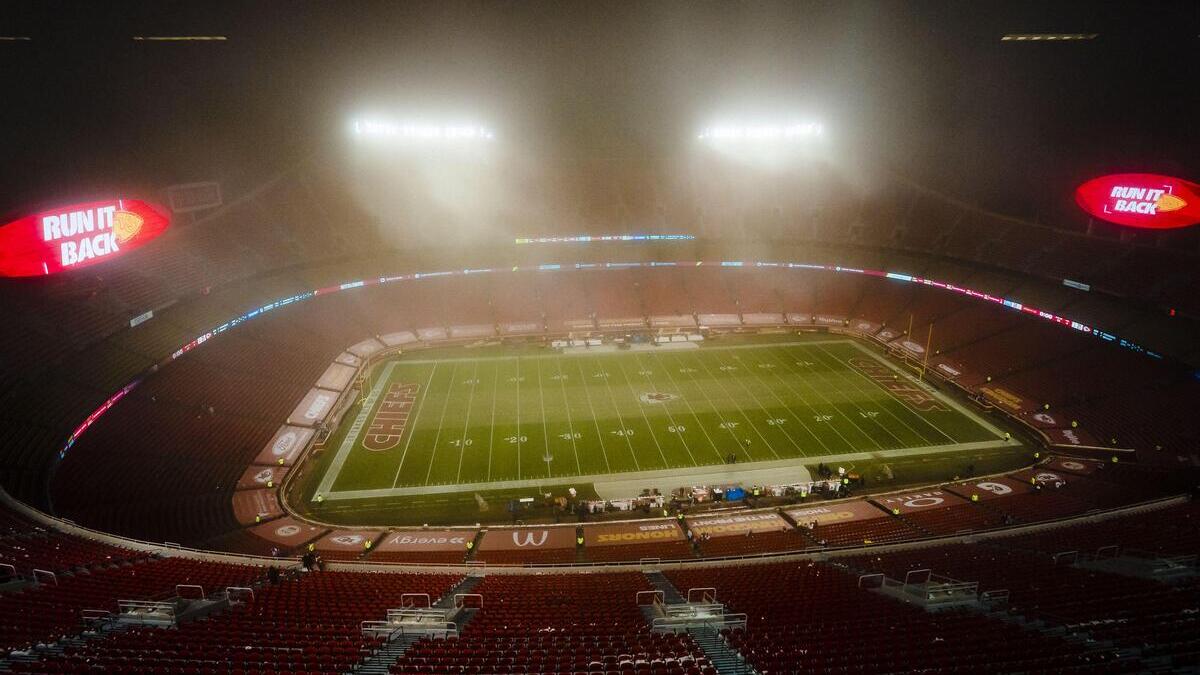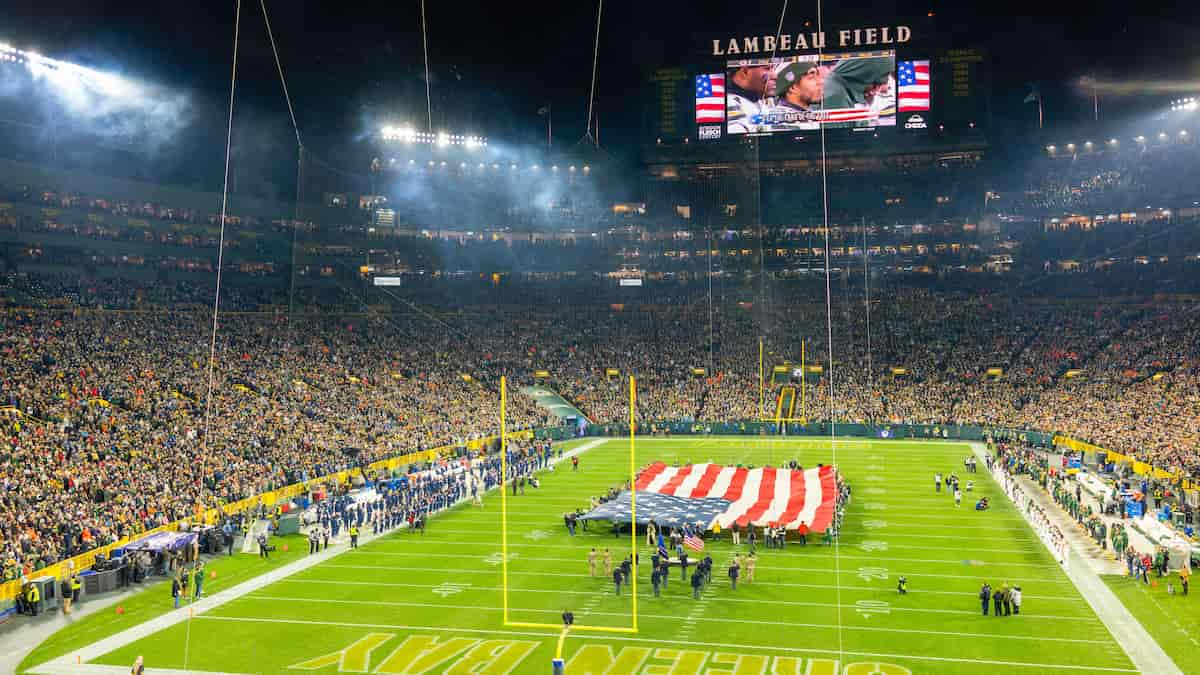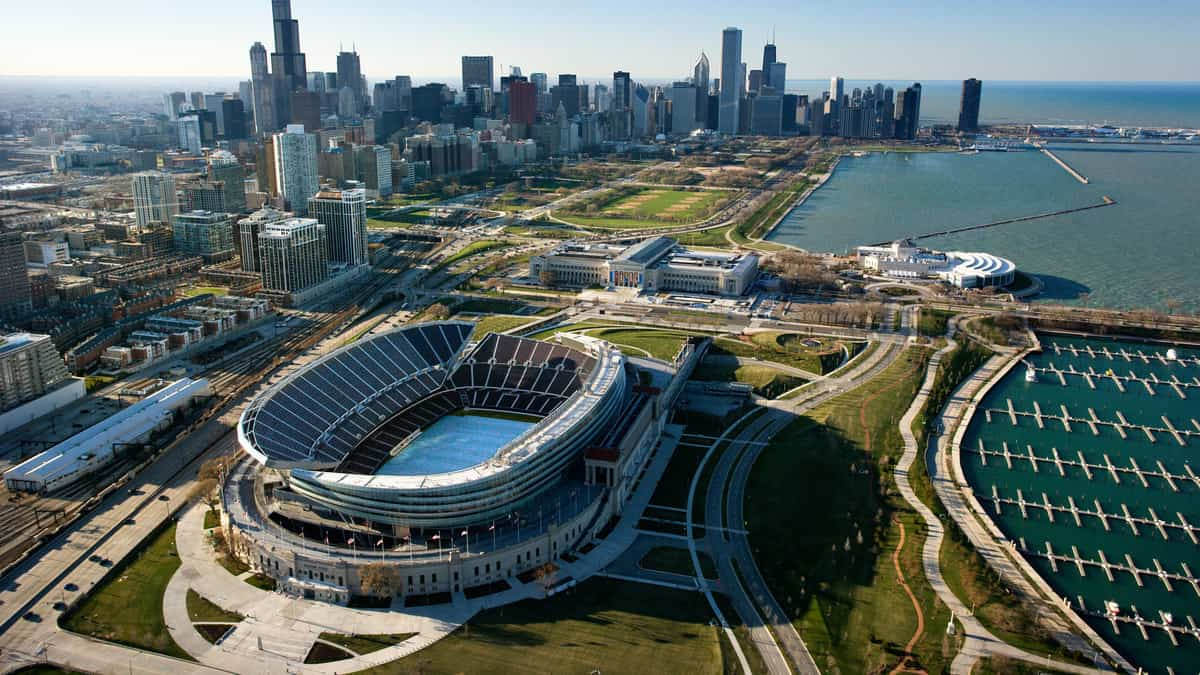Sports have changed a lot since the NFL first debuted in 1920. A new age has brought a higher demand for state-of-the-art stadiums and team facilities. While we have seen many incredible new stadiums open over the years, some of the league’s most famous ones remain. They carry certain lore from football’s early days, with their iconic games still discussed among fans. What they may lack in flash, they make up for with history.
There are just five stadiums left that were built before 1980, though that list will soon be shrinking. Before it does, we are taking time to appreciate these iconic buildings. Below, we will share details on all five of those stadiums, including their history, what makes them unique, and plans for the future.
Year Opened: 1975
Location: New Orleans, NO
Current Capacity: 76,468

As much history as all of these stadiums have, none have the national profile of the Superdome. The stadium has not only been the home of the Saints for almost 50 years, but it has also hosted seven Super Bowls, five NCAA Championships, and the annual Sugar Bowl. That has cemented the stadium name into the minds of sports fans, but its history goes far behind that.
When Hurricane Katrina devastated New Orleans in 2005, the Superdome became a symbol of the horrors the storm brought. There are many haunting images of the damage it sustained, as well as the impromptu shelter that was set up inside. While it has taken New Orleans years to recover from the deadly storm, the stadium was repaired and re-opened in 2006. It became a symbol of the city's resilience, and the New Orleans Saints responded by defying pre-season expectations to go 10-6.
Since then, the Superdome has seen several upgrades that have allowed it to continue to operate as an NFL stadium. That has included updates to the scoreboard and lighting, and they are currently working on a $450 million renovation. That was briefly put on hold in 2021 when a roof fire broke out during the work, but the damage was minimal.
The massive renovations mean the Superdome won’t go anywhere for a while. The stadium has become connected to the city on a level that others do not. Concerts, festivals, and pro wrestling events keep the Superdome busy year-round, firmly entrenched as one of the most important stadiums in all sports.
Year Opened: 1973
Location: Buffalo, NY
Current Capacity: 71,608

Formerly known as the Ralph Wilson Stadium, this is the fourth oldest stadium still operating in the NFL. While it is not always included among the league’s most iconic stadiums, it did allow Buffalo to maintain an NFL team. When the NFL and AFL merged in 1970, the Bills played at the War Memorial Stadium. As a part of the merger, the league stipulated that all stadiums must seat at least 50,000. That was 3,000 more than the stadium offered, leading the Bills to look at relocation. With many other cities attempting to woo the team away from Buffalo, a new stadium was quickly agreed upon, which would open in 1973.
While the stadium has hosted major concerts over the years, it lacks the national notoriety of the Superdome. Its location in northern New York does not make it a popular travel destination, as it is famous for its cold and windy conditions. However, the stadium has provided the Bills with one of the most significant home-field advantages in history. The team has lost just two playoff games there since 1988, including their loss last season.
There have been many renovations to the open-air stadium over the years. The biggest came in 2003 when they switched over to AstroTruf GameDay Grass. The stadium is now the only one left that uses that style of turf. Since then, they have added larger LED screens, ribbon boards, executive suites, and more to stay current with NFL policies. While the cold and whipping winds may scare some fans off, Highmark Stadium is on many diehards’ bucket lists.
Highmark Stadium almost saw its run as an NFL field come to an end in 2012 when the Bills and Erie County were unable to agree to a new lease. That led to the team exploring relocation, with a focus on Toronto. The Bills played a few games in Toronto, which was enough to get New York and Erie County to agree to a $130 million renovation. Since then, the Bills have become one of the league's top teams, giving even more notoriety to the stadium.
If you do visit Highmark Stadium, don’t forget to jump through a table on your way in!
Year Opened: 1972
Location: Kansas City, MO
Current Capacity: 76,416

Also known as GEHA Field at Arrowhead, this is one of the most famous stadiums in the league. Like in Buffalo, the AFL-NFL merger forced Kansas City to ditch Municipal Stadium for a larger option. They gained approval for a $102 million bond to help build what would become Arrowhead Stadium, ensuring the Chiefs would remain in the region. While the original plan was to add a roof and adjoining baseball field, costs, and design issues led to it being open-air. That decision paid off, and the weather has helped the Chiefs establish a significant home-field advantage.
There is no shortage of iconic moments that have taken place at Arrowhead, but the one fans are most proud of is their 2014 world record for noise level. The Chiefs played Tom Brady and the Patriots in a September showdown, and the crowd registered a world-record 142.2 decibels. They briefly held that record in 2013 before the Seahawks beat it, but the 142.2 mark remains unbeaten.
Arrowhead received a significant upgrade in 2007 when the city agreed to a $350 million renovation for Arrowhead and Kauffman Field, home to the Kansas City Royals. The Hunt Family, who owns the Chiefs, also donated $75 million to help cover some of the costs of the legendary stadium. They added improved seating, suites, and a new Hall of Honor.
The renovations were a significant upgrade, giving the stadium a sleeker look while keeping the most iconic parts intact.
The Chiefs have a deal that will keep them in Arrowhead until at least 2031. More renovations are planned, though the stadium is still in great shape.
The biggest issue going forward will likely be the addition of a roof. There have been multiple attempts to add a roof over the decades, and the NFL even promised the city a Super Bowl if they did. Those proposals still failed, keeping the stadium open. Given the home-field advantage the open-air Arrowhead provides, it's hard to see that changing any time soon.
Year Opened: 1957
Location: Green Bay, WI
Current Capacity: 81,441

Lambeau is the most iconic stadium remaining in the NFL, period. The stadium sits in the middle of a residential neighborhood, with homes allowing fans to park in their yards en route to watch their hometown Packers. A town like Green Bay would not be considered for any pro team today, given its population of 104,879. They are only the third biggest city in Wisconsin, sitting behind Milwaukee and Madison. That adds to the small-town feel that surrounds this team and fuels the lore of Lambeau.
The stadium opened in 1957 under the name of New City Stadium. It replaced the Packers' old City Stadium, which was located at a local high school. The stadium was renamed after Curly Lambeau, who founded, played for, and coached the Packers from 1919 until 1949. Before Lambeau was built, the other league owners pressured the team to move to Milwaukee, which had recently built a brand-new baseball stadium. That pressure led Green Bay to approve a new stadium, thus preserving one of the league’s oldest franchises.
Since then, Lambeau has received multiple massive renovations. That includes several expansions completed between 1961 and 2013. It has resulted in Lambeau being the fifth-largest stadium in the NFL, with a capacity just below the city’s population. The stadium also added high-definition scoreboards, an upgraded sound system, and even a rooftop terrace. 2015 brought about a massive upgrade to Lambeau’s atrium, which is now filled with restaurants, a pro shop, and the Packers Hall of Fame.
Given the team and city’s dedication to keeping Lambeau, it is doubtful the Packers will move. Their fanbase ranks among the largest in the league, which has led the Packers to sell out every home game since 1960 (regular season and pre-season) and have a 30-year waiting list for season tickets. The Packers are also a publicly owned team, meaning they don’t have to worry about an owner looking to move. It is safe to say that Lambeau will be around for a very long time.
Year Opened: 1924
Location: Chicago, IL
Current Capacity: 61,500

Solider Field is the NFL’s oldest stadium, and it's not even close. The stadium was built in 1926, though the Bears did not make it their home until 1971. The stadium was used for charity games and the occasional clash between the Chicago Cardinals and Bears. The Cardinals moved into Soldier Field in 1959 but left for St. Louis the following season. The stadium continued to host special events until the Bears officially moved in.
While Soldier Field spent much time without a team, it still hosted some of the most significant events in the city’s history. That included famous speeches from President Franklin D. Roosevelt, Martin Luther King Jr., and General Douglas MacArthur. The stadium also hosted war shows during World War II to help boost morale. That is a lot of history in one stadium, and it doesn’t even include football.
As famous as the stadium was, the Bears came close to leaving it behind in 1989. The team asked Illinois to approve a new stadium with a dome, but the proposal was rejected in 1990. That led the team to look at relocation, leading them to purchase several different properties. At one point, the Bears had a deal in place for a new stadium in Indiana, but the county ultimately rejected the proposal. Renovations were rare until 2002 when they made a controversial decision to alter the stadium's iconic design. They removed the famous pillars from the outside and added seating that made it appear as if a spaceship had landed atop the stadium. The clash angered fans and ultimately cost them their landmark designation.
Unfortunately, the battles between Chicago and the Bears have led the team to begin construction plans in Arlington, IL. However, they have not committed to making the move as they continue to evaluate other possible sites. The Bears have a lease for Soldier Field until 2032, but it appears the lack of renovations and bitter feelings with City leadership have them ready to move on.
/fit-in/400x235/1745495527/breiden-fehoko-talks-nfl-draft.jpg)
Breiden Fehoko Speaks on Shedeur, NFL Draft, Aaron Rodgers, and More
1 day ago | Grant Mitchell/fit-in/400x235/1745396799/nfl-draft-odds-swing-mason-graham.jpg)
NFL Draft Controversy: Why Betting Odds Are Swinging on the Fifth Pick
2 days ago | Grant Mitchell/fit-in/400x235/1745322227/2025-nfl-draft-odds.jpg)
2025 NFL Draft Odds: Ward, Hunter Top Two, Jeanty as High as Fourth?
3 days ago | Grant Mitchell
We support responsible gambling. Gambling can be addictive, please play responsibly. If you need help, call
1-800-Gambler.
WSN.com is managed by Gentoo Media. Unless declared otherwise, all of the visible content on this site, such
as texts and images, including the brand name and logo, belongs to Innovation Labs Limited (a Gentoo Media
company) - Company Registration Number C44130, VAT ID: MT18874732, @GIG Beach Triq id-Dragunara, St.
Julians, STJ3148, Malta.
Advertising Disclosure: WSN.com contains links to partner websites. When a visitor to our website clicks on
one of these links and makes a purchase at a partner site, World Sports Network is paid a commission.
Copyright © 2025